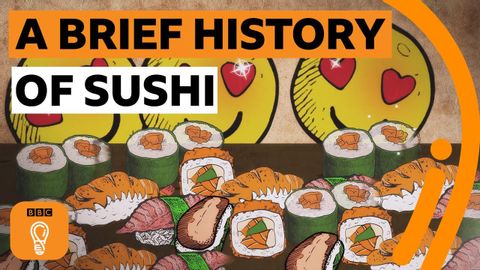以前居然被稱作嘔吐物?!來看日本壽司是如何發揚光大的! (How we fell in love with sushi | BBC Ideas)
Summer 發佈於 2021 年 10 月 13 日  沒有此條件下的單字
沒有此條件下的單字US /ˈʌltəmɪt/
・
UK /ˈʌltɪmət/
- adj.最終的;基本的;根本的;最好的;最終的;最大
- n.飛盤爭奪賽;極致;終極
US /tɛkˈnik/
・
UK /tekˈni:k/
- n. (c./u.)技術;工藝;技能;(藝術)技巧
US /ˈkɑnˌsɛpt/
・
UK /'kɒnsept/
